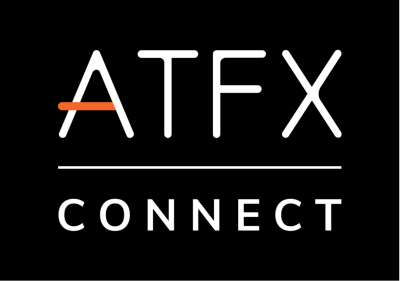TradeTech FX USA 2026
February 9 - 11, 2026
JW Marriott Marquis, Miami
2019 Day 1 Highlights
Access to markets, fee compression top watch list for FX trading heads
Head Trader Keynote Interview: Determining the critical success factors for building a ‘best in class’ FX trading business that not only survives but thrives in the new market order
Moderator: Michael Melvin, Executive Director, Rady School of Management UCSD
Andrew Maack, Head of FX Trading, Vanguard
Tomo Tokuyama, Global Head of Trading, First Quadrant
Heads of FX trading highlighted their desire for greater direct access to markets and fee compression as top of their watch lists during a keynote interview at TradeTech FX US.
When considering what the FX trading desks at their firms required to move forward, the two issues where raised alongside a discussion around the merits of TCA use both for pre- and post-trade reasons.
“For us it is really around access to some of the restricted markets, especially when hedging, so trying to get away from using the Non-Deliverable Forwards where possible and getting access direct to on-shore markets,” said Andrew Maack, head of FX trading at Vanguard.
“We follow the benchmarks which typically follow the on-shore rates to value an index, so we're if we are in region like Indonesia and we are trying to hedge that using off-shore, any deviation from the off-shore rate shows up in the portfolios. So trying to get access to those markets is important for us.”
Meanwhile, Tomo Tokuyama, head of trading at First Quadrant – a quant trading house based out of California – stated his concern over growing fee compression in the future.
“As fees continue to get compressed, firms will look anywhere to gain an edge and they will look internally. They are going to look at where they can gain efficiencies, which is something we are tasked to do daily,” he commented.
Data was also a key issue for both Maack and Tokoyuma, particularly around the usage of TCA, for both pre- and post-trade.
Maack opined that he places greater importance on post-trade data for trading activity at Vanguard to “evaluate the way we are actually executing; we have a sense of the pre-trade already in terms of accessing liquidity and when to execute.”
First Quadrant’s Tokuyama was of the opinion that it was “about even”, with post-trade data only having real value if benchmarks are set at the right level, while pre-trade provided “a little bit of a map or justifies what we are trying to do. Pre-trade can help us at least justify or make us change our minds in terms of what we are doing.”
Buy-side urged to better understand underlying liquidity in FX algos
All Star Panel: Evaluating the state of liquidity in FX markets today- How can you ensure you have the right capital and access to liquidity to facilitate your mandates?
Moderator: Kenneth Monahan, Senior Analyst, Greenwich Associates
Kevin Kimmel, Global Head of eFX, Citadel Securities
Amish J. Naik, ALGO iX, Global Sales Strategy, BNP Paribas
Brad Bechtel, Global Head of FX, Jefferies
Ben Klixbull, Head of Distribution and Liquidity Management, Americas, XTX Markets
Institutional investors have been urged to gain a better understanding of the underlying liquidity in foreign exchange (FX) algorithms by major market makers and sell-side institutions.
Speaking at TradeTech FX USA in Miami, panelists from Citadel Securities, XTX Markets, BNP Paribas and Jefferies agreed that the buy-side now has a good understanding of how algorithms in FX work, but need to focus on the underlying liquidity behind the algos.
“The buy-side themselves, I would say, have a firm grasp on how algorithms operate, but less of an understanding about the underlying liquidity. Moving forward, the buy-side needs to understand the types of liquidity those algos are seeking, because aggressive liquidity seeking algos are very different from passive liquidity seeking algos,” said Kevin Kimmel, global head of eFX at Citadel Securities.
“It’s a conversation between the buy-side and the banks, and banks will be competing in the algo space and will have to differentiate themselves in terms of execution quality. As a liquidity provider, we want to be measured if we are confident in our quality of execution.”
Delegates at TradeTech FX USA were polled on the different factors taken into account when measuring liquidity, with a majority of 45% stating that market impact was the most important factor, followed by bid/offer spread which 39% of the audience said was most important.
“As we can see from the poll, market impact is also a big deal,” Asif Razaq, global head of FX automated execution, BNP Paribas, told delegates. “You can have a conversation with a liquidity provider and ask what is the liquidity behind the algo, what the market impact is, and for the sell-side to be flexible and willing to make changes, constantly changing liquidity profiles for the client, is also important.”
At TradeTech FX in Europe in September, a panel of buy- and sell-side market participants agreed that transaction cost analysis (TCA) on FX algos has proven to be a useful tool for asset managers seeking a better understanding on algo performance.
Data will be key differentiator for FX platforms amid consolidation concerns
All Star Panel: From fragmentation to consolidation- Assessing the spectrum of trading venues and what makes the optimum mix to build a strong network of diversified liquidity pools?
Live polling and interactive audience Q&A during this session
Moderator: Kenneth Monahan, Senior Analyst, Greenwich Associates
Jill Sigelbaum, Head of FXall, Refinitiv
Matt O’Hara, CEO, 360T
James Sinclair, Executive Director, MarketFactory
Jim Iorio, CME Group
Andrew Ralich, CEO, OneZero Financial Systems
The intense competition for FX trading venues may come down to the quality and use of data as a key differentiator, according to speakers at this year’s TradeTech FX USA conference.
The FX market has witnessed a significant proliferation of trading venues coming to market over the course of the last several years, with expectations of major consolidation soon to come, however the use of data will be instrumental going forward to build and optimise a diverse liquidity network.
“Empirically there are a growing number of venues and every year it has grown. The reason for this is that the light regulation in FX means it's a low barrier to entry and that we cannot predict what new ideas people will have,” said James Sinclair, executive director, Market Factory.
Within such a crowded marketplace with low barriers to entry, competition among venues is fierce and innovation is required to stand apart to attract buy-side clients.
“One thing that should be very clear is the innovation that is happening in data science right now is not that you are going to get a new type of PDF or graph from your vendor or liquidity provide that is going to make you smarter,” commented Andrew Ralich, CEO of technology provider, OneZero.
“The venues stepping up to provide data in the same ways that liquidity providers have been using it before is going to be one of the differentiating factors, as well as one of the interesting consolidation factors. It’s a challenge but the technology is out there now to do it.”
Jill Sigelbaum, head of FXall, Refinitiv’s trading venue for FX, also highlighted the important role of data provision and usage for the future of the FX markets, particularly for different venue operators.
“It's a huge advantage to be a large venue operator because you have access to all that rich data. This gives us a super amount of intelligence on how the market is trading, when is a good time to trade, and we're building tools to give that information back to our clients so that they have better intelligence with how they trading,” Sigelbaum said.
“The next step will be to automatically generate decision support suggestions in real-time. The third step, probably a few years from now, will be to automatically trade based on parameters that are set based on what clients need to achieve.”
Buy-side looking for flexibility as top technology requirement
2:20 360 Perspective: Taking a modern approach to workflow efficiency- How can you ensure your OMS/EMS system is meeting the highest standards to support your trading and portfolio management needs?
Moderator: Brad Bailey, Capital Markets Research Director, Celent, Oliver Wyman
Michael O’Brien, Head of Global Trading, Eaton Vance
Griffin Frank, Next Generation Trading Analyst, Vanguard
Christopher Matsko, Head of FX Trading Services, Portware, A Factset Company
Buy-side panelists at this year’s TradeTech FX USA conference identified flexibility as their key requirement from both technology systems and vendors to maintain high workflow standards and to increase automation.
Mike O’Brien, head of global trading at Eaton Vance, detailed that the key drivers for the asset manager’s recent investments in technology have been automation and efficiencies, at least as a starting point, and that this requirement necessitates a good deal of flexibility from partnerships with technology vendors.
"We're thinking of a vendor partnership where the vendor is forward-looking, so that they don't need to wait until 80-90% of their clients to ask for something before they do it. Market structure or the way things trade can change very quickly, and if I am asking for it there's a pretty good chance a lot of other people are going to be asking for it. By the time you get to that 90th percentile, it's probably something everyone needed three years ago," he said.
“There are definitely specific vendors in FX that won't exist in their current form several years down the line, because they are not very forward-looking and adapting to the way FX is changing. Those that will and are making decisions today about what things will look like, even if those calls are wrong, the fact that they are thinking about the future and not just preserving the way things are will be the people that I want to work with."
O’Brien’s comments were echoed by Griffin Frank, a next generation trading analyst at Vanguard, who highlighted that the changing requirements of a large asset manager require a vendor or technology provider than can adapt, especially as “implementation costs are astronomical and it’s going to take months, if not years.”
“Flexibility is also one of the challenges with the larger technology providers, because they don't need to be flexible. They are going to listen to 80-90% of people and if they say that's what they want, that's what they are going to build. It might be something very specific to your business, something very niche, that they are not going to provide for you and then you need to think if you can build that in-house. That could be a massive business opportunity that you are missing out on,” Frank said.
However, Frank also highlighted a caveat to greater flexibility, stating that firms should be wary of vendors providing “vapourware” - technology that is still in the concept phase or in the early stages of development: “Anytime I hear 'We can do that', that doesn't mean 'We do that'. The system you are getting, which you may be halfway done implementing, may not do the real thing you need it to do.”
Wish List
Technology cost has become a huge factor for trading desks, especially for the head of the desk, who must take responsibility for increased spend and return on investments for implemented systems.
In an ideal world where technology budgets were not an issue, Vanguard’s Frank detailed that he would look to acquire a technology infrastructure that provided a view into “everything that is impacting the investment decision.”
“You want full control. Depending on the size of the pockets you're trading, you probably could get something like that, but I think that is a pipe dream as far as I am concerned. The amount of money that it would take us to fully rebuild our technology so that we have that would be astronomical and I don't know that we could get the return on that,” he commented.
Eaton Vance’s O’Brien opined that he would seek to automate as many manual, low-value-add tasks as possible, to reduce the possibility of errors in repetitive tasks and, more importantly, make sure that the trader are spending time on the most valuable work.
However, referring to an earlier point made by Frank, O’Brien cautioned that the evolutionary nature of technology-led trading means forward planning is often a tricky issue: “It is a never-ending problem; technology is going to change, market structure is going to change, and just because something works today doesn't mean it's going to be the best method in the future,” he said.
Trading firms seek ‘in-flight’ TCA to flag potentially bad FX trades
3:00 360 Perspective: Establishing your path to best execution- How can you get the most out of your pre and post trade TCA capabilities to inform current and future FX execution?
Moderator: Eva Szalay, Currencies Correspondent, Financial Times
John Radle, Head of Trading, Campbell & Co.
Holden Sibley, Managing Director, Head of Americas eFX Distribution, Barclays Investment Bank
Ruben Costa Santos, Head of Multi-Asset Analytics, ITG
Michael Babic, VP, Americas Head FX eCommerce Sales, Goldman Sachs
Foreign exchange market participants are seeking efficient methods of alerting traders if an ongoing transaction isn’t going as planned using real-time, or ‘in-flight’, transaction cost analysis (TCA).
Buy- and sell-side panelists at the TradeTech FX USA conference in Miami dissected the use cases of TCA data, with pre-trade analytics allowing firms to work out expected costs of a trade, and post-trade analytics showing the realized costs. The panel agreed that in-flight data could prove extremely useful in terms of flagging issues with ongoing trades.
“The in-flight data is where it gets interesting, because what if costs are way worse that you expected? It would be far more interesting to monitor in-flight data so that you could potentially flag when the costs of a trade is deviating significantly from what you expected,” said John Radle, head of trading at quantitative investment firm Campbell & Co. “It’s hard to monitor every single order so it’d be great to be able to flag the trade and say let’s get some eyes on this.”
Michael Babic, Americas head of FX eCommerce sales at Goldman Sachs, agreed with Radle, adding that this is an area of focus for Goldman Sachs due to engagement from clients on the development, and the clear benefits such analytics could provide for FX traders.
“We focus a lot of time on the in-flight TCA where traders can be empowered with being able to look at how they are addressing problems in terms of what is happening, versus your expectations before you started the trade,” Babic told delegates. “That’s where our clients really want to engage, so that they can be alerted if a trade isn’t going as planned, and then they can do something about it.”
Panellists also agreed that buy- and sell-side firms simply don’t have the bandwidth to monitor every single trade in real-time, so the need to be alerted if a trade isn’t going as planned has become more crucial.
“I would agree the more we can move towards closing that loop from the post-trade to intra-trade environment, the better it will be for everyone,” Holden Sibley, head of Americas eFX distribution at Barclays, added. “To get there will involve the close dialogue that Michael and John are talking about, alongside an increasingly trigger and alert-based mechanism.”









































